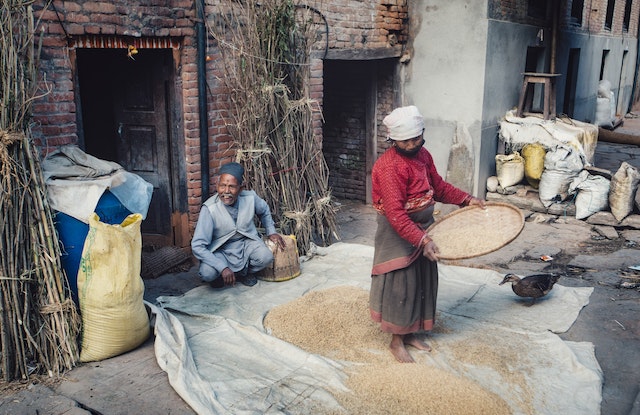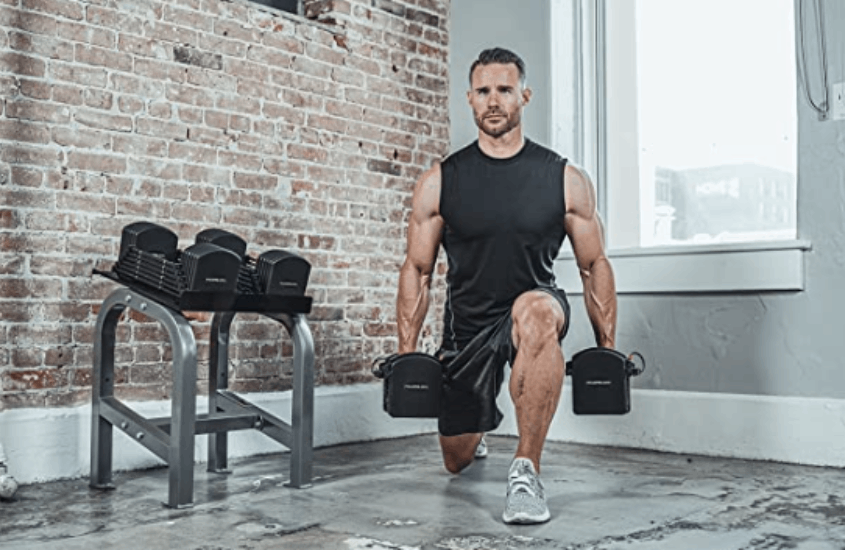Stay Protected and Productive: The Importance of Proper Workwear

The Importance of Proper Workwear is an industry that requires hard work, dedication, and a deep understanding of the land. From tending to crops and caring for livestock to operating heavy machinery, farmers face numerous challenges and hazards in their daily work. One crucial aspect that contributes to their safety, comfort, and productivity is the right choice of agricultural workwear.
The Importance of Proper Workwear r serves as a protective shield against various elements found on the farm, including harsh weather conditions, sharp tools, chemicals, and potential accidents. It not only safeguards farmers’ well-being but also plays a vital role in enhancing their efficiency and overall performance.
In this guide, we will explore the world of agricultural workwear, delving into the essential factors to consider when selecting appropriate clothing and accessories. We will discuss the importance of comfort, durability, and safety features, as well as the latest trends and innovations in workwear design. Whether you’re a seasoned farmer or just starting out in the industry, this guide aims to help you make informed choices that will keep you protected and productive in the agricultural environment.
So, join us as we dive into the realm of agricultural workwear, uncovering the best practices and recommendations to ensure that you have the right gear for the job. Together, let’s embrace the importance of quality workwear and its impact on the well-being and success of those working tirelessly to feed our communities.
What is agricultural workwear?
The Importance of Proper Workwear refers to specialized clothing and accessories specifically designed to meet the unique needs of farmers and agricultural workers. It serves as a vital protective layer between the wearer and the various hazards present in agricultural environments. From tending to crops and livestock to operating machinery and handling chemicals, farmers face a range of risks on a daily basis.

Agricultural workwear is designed to address these risks and provide essential protection. The clothing is typically made from durable materials that can withstand rough conditions, resist tears, and provide resistance against sharp objects, thorns, and abrasive surfaces. Reinforced stitching and robust construction ensure longevity and durability, making the workwear suitable for the demanding and physically demanding tasks performed in agriculture.
Comfort is another critical aspect of The Importance of Proper Workwear. Farmers often spend long hours working outdoors, so the clothing is designed to allow freedom of movement and ventilation while keeping the wearer cool and dry. Breathable fabrics and moisture-wicking properties help manage perspiration and maintain comfort throughout the day.
Safety is paramount in agricultural workwear design. Many garments are equipped with reflective elements to enhance visibility, especially during low-light conditions or when working near roadways. Some workwear may also incorporate features such as fire resistance, chemical resistance, or insulation for protection against specific hazards prevalent in certain farming practices.
Why is proper agricultural workwear important?
Proper agricultural workwear is crucial for ensuring the safety and well-being of farmers and agricultural workers. The nature of agricultural tasks exposes individuals to a range of hazards, including sharp tools, heavy machinery, unpredictable weather conditions, and exposure to chemicals or pesticides.
By wearing appropriate workwear, farmers can mitigate these risks and protect themselves from potential injuries and health hazards. Sturdy and durable clothing, such as reinforced pants and jackets, shields the body from cuts, punctures, and abrasions. Work boots with slip-resistant soles and steel toes provide vital foot protection against crushing injuries and punctures.
Furthermore, The Importance of Proper Workwear plays a significant role in protecting workers from adverse weather conditions. It helps regulate body temperature, whether it be insulation to keep warm during cold spells or moisture-wicking fabrics to keep cool in hot climates. Protective headgear, such as wide-brimmed hats or helmets, shields against the sun’s harmful rays and falling objects.
In addition to physical protection, proper agricultural workwear promotes comfort and enhances productivity. Well-fitting and breathable clothing allows for ease of movement, reducing fatigue and increasing flexibility during long hours of work. It also helps manage sweat and moisture, minimizing discomfort and the risk of skin irritations.
Moreover, proper workwear can improve visibility and identification, enhancing overall safety on the farm. Reflective elements or high-visibility colors incorporated into workwear make workers more visible to others, particularly in low-light conditions or when working near moving vehicles.
How to properly maintain and care for your agricultural workwear?
Proper maintenance and care of agricultural workwear are essential to maximize its lifespan, retain its protective qualities, and ensure continued comfort and effectiveness. Here are some key tips to follow:
Read the Care Instructions: Before washing or treating your workwear, carefully read and follow the manufacturer’s care instructions. Different materials and fabrics may have specific requirements, such as temperature limits, detergent recommendations, or avoidance of certain chemicals.
Pre-Treat Stains: Promptly treat any stains or spills on your workwear. Use a stain remover or pre-treatment solution to target specific stains before washing. This helps prevent the stains from setting in and becoming more difficult to remove.
Wash with Care: Turn your workwear inside out before washing to protect the outer surface and any reflective elements. Use a gentle or delicate cycle, preferably with cold water, to minimize shrinkage and preserve the fabric’s integrity. Avoid using harsh detergents or bleach that can degrade the material or compromise its protective properties.
Dry Appropriately: Air-drying is generally recommended for agricultural workwear to prevent excessive shrinkage or damage from high heat. Hang your garments on a clothesline or lay them flat to dry naturally. If using a dryer, opt for low heat settings or tumble dry with no heat.
Inspect Regularly: Routinely inspect your workwear for any signs of wear, tear, or damage. Check for loose seams, frayed fabric, or weakened closures. Replace or repair any damaged areas promptly to maintain the protective capabilities of your workwear.
Store Properly: When not in use, store your workwear in a clean and dry environment. Keep it away from direct sunlight, excessive heat, or chemicals that may deteriorate the fabric. Proper storage helps prevent mildew, odors, and premature degradation.
What are the benefits of proper agricultural workwear?
Proper agricultural workwear offers numerous benefits to farmers and agricultural workers:
Enhanced Safety: The primary benefit of proper agricultural workwear is improved safety. It acts as a protective barrier against various hazards encountered in agricultural tasks, such as cuts, abrasions, punctures, chemicals, and extreme weather conditions. By wearing appropriate workwear, individuals reduce the risk of injuries and potential health hazards.
Increased Comfort: Comfortable workwear allows for better mobility, flexibility, and overall comfort during physically demanding agricultural tasks. Properly fitted garments with breathable fabrics and moisture-wicking properties help regulate body temperature and manage sweat, reducing fatigue and discomfort.
Improved Productivity: When workers feel safe and comfortable, their productivity tends to increase. Proper workwear provides the necessary protection, allowing individuals to focus on their tasks without unnecessary distractions or concerns about their well-being. It promotes confidence and enables workers to perform at their best.
Longevity of Clothing: By following proper maintenance and care practices, agricultural workwear can have an extended lifespan. This reduces the frequency of replacement and helps save costs in the long run. Durable and well-maintained workwear ensures continued protection and effectiveness throughout its usable life.
Compliance with Regulations: Agricultural workwear often needs to meet specific safety standards. And regulations, depending on the region or specific farming practices. By wearing proper workwear that complies with these regulations, farmers and agricultural workers can ensure they are meeting legal requirements and promoting a safe working environment.
What to look for when purchasing agricultural workwear?
When purchasing agricultural workwear, there are several important factors to consider:
Material and Durability: Look for workwear made from durable materials that can withstand the rigors of agricultural work. Heavy-duty fabrics like cotton duck, denim, or ripstop nylon are commonly used for their strength and resistance to tears and abrasions. Reinforced stitching and quality construction ensure longevity, making the workwear capable of withstanding rough conditions.
Protection and Safety: Prioritize workwear that offers appropriate protection against the specific hazards present in your agricultural tasks. This may include features such as reinforced knees, elbows. And seat areas for added durability, flame-resistant properties, high-visibility elements for improved visibility. And protection against chemical splashes or exposure to pesticides.
Comfort and Fit: The Importance of Proper Workwear work can be physically demanding, so choose workwear that provides comfort and allows for ease of movement. Look for designs with ergonomic cuts and flexible fabrics that offer a good range of motion. Adjustable features like waistbands, cuffs, and straps can help achieve a proper fit and enhance overall comfort.
Weather Resistance: Consider the weather conditions in which you will be working and choose workwear that provides appropriate protection. For hot climates, opt for breathable and moisture-wicking fabrics to keep cool. In cold or wet conditions, look for insulated or waterproof workwear to maintain warmth and dryness.
Pockets and Storage: Assess the need for ample storage space in your workwear. Multiple pockets, tool loops, and compartments allow for convenient storage of essential items. And tools, keeping them easily accessible during work.
Compliance with Regulations: Ensure that the workwear meets any relevant safety standards or regulations set by your region or industry. Look for certifications or labels indicating compliance with specific safety requirements, particularly if working on farms that require adherence to certain standards.
Conclusion
In conclusion, proper agricultural workwear is essential for the safety, comfort, and productivity of farmers and agricultural workers. It acts as a protective shield against the various hazards encountered in agricultural tasks, reducing the risk of injuries and health hazards. By choosing workwear with appropriate safety features, durable materials. And a comfortable fit, individuals can work with confidence and focus on their tasks without unnecessary distractions.
The benefits of proper agricultural workwear extend beyond safety. It promotes increased productivity, as workers can perform tasks more efficiently when they feel safe and comfortable. Well-maintained workwear also offers longevity, saving costs by reducing the frequency of replacement. Compliance with regulations ensures legal requirements are met and fosters a professional working environment. We will explore the importance of agricultural workwear and introduce Best Academy dumbbells as a reliable fitness equipment brand. We will also provide exercise suggestions and maintenance tips for both workwear and dumbbells.









